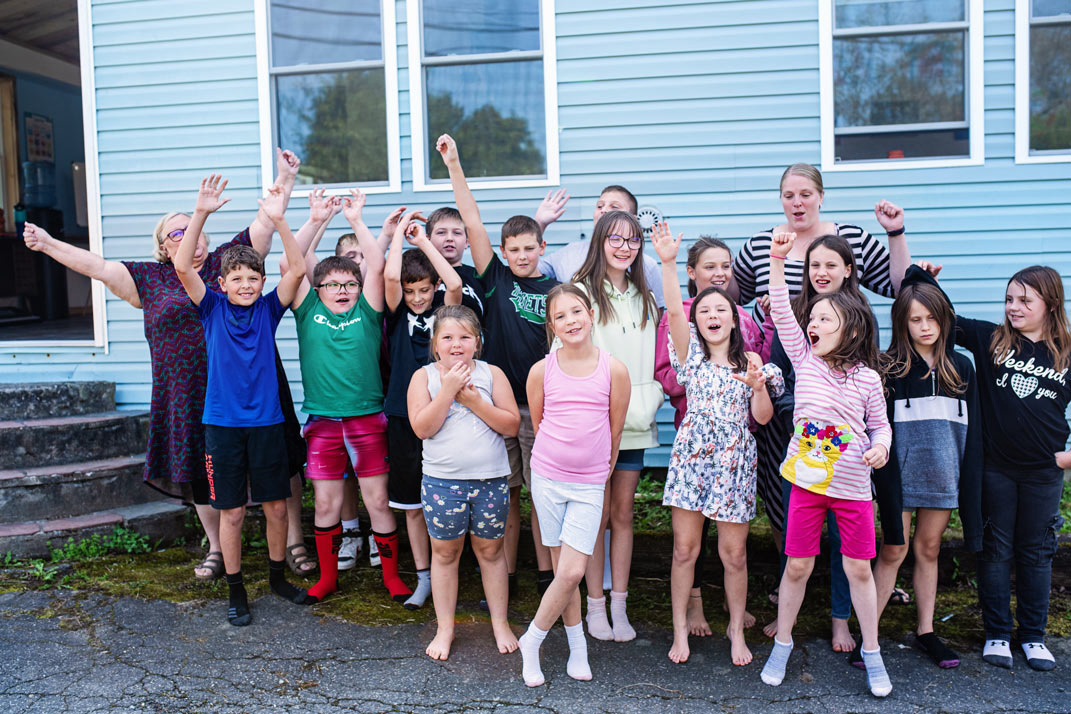How to Start Your Own Microschool This Year: A Step-by-Step Guide
Are you an educator or a parent looking to create a personalized and dynamic learning environment for children?
If so, microschools might be the perfect solution for you. Microschools are small, community-based schools that offer personalized and experiential learning opportunities.
But where do you start when it comes to setting up your own microschool?
We got you covered—this blog covers everything you need to know from step-by-step setup instructions, details on teacher qualifications, and even information on how Prenda can assist you.
Whether you're a seasoned educator or a passionate parent, this blog will help you create a successful microschool that meets the needs of your community and students.
Let's get into it!
What is a microschool exactly?
The word “microschool” has been used to describe a wide range of learning environments that don’t necessarily have much in common besides the fact that they are smaller than most conventional brick-and-mortar schools. There are self-directed microschools, Montessori-inspired microschools, classical education microschools, forest microschools, and microschools that look and feel a lot like a conventional education classroom.
This is good! The future of education should be full of a wide range of choices that can fill the unique needs of each family and student in both format and philosophy.
Why are microschools so popular?
One of the main criticisms of traditional “school” is that it’s a one-size-fits-all solution. Microschools aim to provide a more personalized, tailored approach to learning to prevent this one-size-fits-all conveyor-belt-based approach.
Many people are drawn to microschooling because of the highly personalized approach a smaller group of students can offer. Kids in microschools tend to play a more active role in their learning instead of passively receiving information, remembering it long enough to pass a test, and then never using or recalling it again. Microschools allow kids to develop strong relationships with peers and teachers, learn in creative ways, and maintain strong mental health throughout their adolescent years.
How can I start my own microschool: step-by-step
(This post is a high-level overview—if you want a deeper dive, we suggest taking our 30-minute mini-course “The Beginner’s Guide to Microschoolling”)
Step 1
Identify why you want to create a microschool.
What makes you passionate about creating a new educational environment? Do you have a vision for the future of education? Are you trying to serve a specific niche or need in your community? Identifying your “why” will help you accomplish step 2.
Step 2
Decide what philosophy or approach speaks to you.
Are you inspired by Montessori or Waldorf? Do you want kids to have a mastery of the classics and to be able to express themselves logically? Do you love the idea of helping kids learn how to chart their own path in the world? Do you think nature, performing arts, or STEM should be foundational? This decision will give vision and direction to your future microschool.
Step 3
Once you’ve got your vision clear, it’s time to think about logistics.
How many students?
Think about how many students you imagine having. This will determine what kind of space you’ll need and if you’ll need to hire others to help you. Keep in mind that bigger is not necessarily better when it comes to microschools. They are small for a reason.
Where will you meet?
Think about your vision and school size—what is the simplest, least expensive location that will allow you to execute this vision? Many microschool founders start in their homes. Rented churches, community centers, or sports facilities are also great options.
What local regulations will you need to follow?
Depending on your state, microschools (sometimes referred to as “learning pods”) are looked at differently. Some states require microschools of a specific size to meet accreditation requirements and register as formal private schools. Other states see microschools as a homeschool extension service.
How will you keep students safe?
Student safety is of the utmost importance. Is your location a safe place for kids? Are the people in your location safe people? Are harmful substances, bodies of water, or internet access putting your students at risk? Will you need liability insurance to protect yourself in case of an accident?
How will students fund their microschool experience?
Since most microschools don’t qualify for use of public funds like your neighborhood public or charter school, you’ll need to decide what tuition or fees you’ll charge and if students will have access to financial assistance. In some states, empowerment scholarship account (ESA) programs allow students to access state funds and attend microschools with minimal/no out-of-pocket costs. To learn about ESA options in your state, check out Ed-Choice’s School Choice Dashboard.
Can anyone be a microschool founder?
There are no educational requirements to start a microschool. You don’t need to be a certified teacher unless you are seeking to start a private school and the state you live in requires it. You do need to love kids and be able to provide a learning environment that is in alignment with what families are looking for. As long as the parents of your students are happy with what you’re providing, they will continue to send their kids to you!
To be a successful microschool leader, you’ll need to be willing to roll your sleeves up a bit and figure lots of things out. Working with a microschool network (like Prenda) can help alleviate the number of barriers to starting your school.
How can Prenda help me to start my microschool?
Prenda is one of the largest and most trusted microschool networks in the United States. To us, a microschool is a group of 5-10 kids who are learning to own their learning through mastery of core skills and discover their personal purpose and passion by following their curiosity and interests. We provide a K-8th curriculum, microschool management platform, financial services, and tons of other tools and supports that make it easy for inspiring, caring grownups to start microschools.
If you believe every child should be seen as a unique individual, be allowed to grow at their own pace academically, and have the opportunity to discover their personal purpose for learning, there's a good chance you'd be an amazing Prenda guide.
To learn more about all the support and resources Prenda offers, watch our Microschooling 101 video!

.png)

 Share on Facebook
Share on Facebook
 Share on Twitter
Share on Twitter
 Share on LinkedIn
Share on LinkedIn
 Share on Pinterest
Share on Pinterest

.svg)





.svg)






